
Viswanath Temple of Varanashi i.e. Kashi is regarded as one of the most lively and auspicious Shiva temple in the entire world. Viswanath Temple of Kashi (Varanasi) is very famous and very auspicious temple to all Hindus. This is Jyotirling Shiva. It is said that the person who offer Puja to Lord Shiva with 'Bel Pallab' ( the sacred Wood-apple leaves ), all his desires get fulfilled. The person who have lost everything of his/ her mental peace (Shanti), gets back everything with the blessings of Lord Shiva. He (Lord Shiva) is open handed to all ...very very kind hearted ...gives you everything which is beneficial for you.
It's said that People never come back with empty hands from Viswanath Temple after offering Puja to Lord Shiva. It sounds like a mere story but true as millions of devotees say that if somebody offer Puja with a holy mind to Lord Shiva of Kashi Viswanath with Ganga Water , Billa Patra, Akanda or Dhutra, Lord shiva get immensely satisfied with him / her and blessed for fulfilling his / her secret desire. Lord Shiva sets him/her free from all distress and give Shanti ...peace in mind.
Varanasi is very very holy city. Very auspicious city. Its said that Bhagwan Sri Ram came here and stayed. Panch Pandava also came here and established SHIVLING. Mahaprabhu Sri Chaitannya came here. This is the place where so many noble men stayed for long time like – Vaskar Rao, Tailang Swami, Katia Baba, Swami Avdhoot, Sant Kinaram, Swami Bisudhyananda, Shyama charan Lahiri etc.
Even sitting at a long distant place offer your Special online Puja to Lord Shiva at the holiest temple i.e. Kashi Viswnath Temple of Varanasi - for getting your secret desires fulfilled and getting a peace in your life.














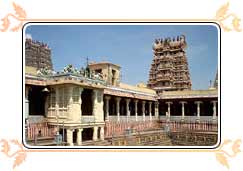
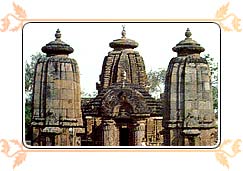
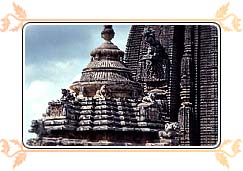
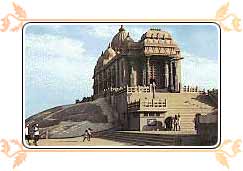
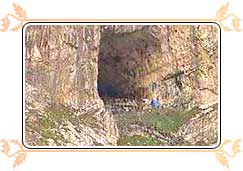 Amarnath Yatra
Amarnath Yatra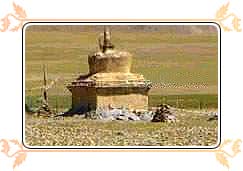 Mt. Kailash is claimed to be the apex of the Hindu religious axis, is also one of the highest mountains in Tibet at 22,022 feet. Lord Shiva resides over here among the peaceful Himalayas. A mythological story says that Lord Shiva once built a house for himself but gave it away to a devotee who asked for it. Thus without changing his residence he settled in the mountain of Kailash. This is his abode where he stays with his whole family including his wife Goddess Parvati and children Lord Ganesha and Lord Kartikiya and the other Shiv Ganas (group of Shiva Devotees) like Nandi and others. According to ancient religious texts, the abode of Lord Vishnu is called Vaikuntha, the abode of Lord Bhrama is called Bhramaloka and the abode of Lord Shiva is called Kailash. Of the three, one can only go bodily and return in this life from Kailash having experienced divinity. The Hindus, Bons and Jains all alike travel to this place as pilgrims. A journey to Kailash is considered as once in a lifetime achievement.
Mt. Kailash is claimed to be the apex of the Hindu religious axis, is also one of the highest mountains in Tibet at 22,022 feet. Lord Shiva resides over here among the peaceful Himalayas. A mythological story says that Lord Shiva once built a house for himself but gave it away to a devotee who asked for it. Thus without changing his residence he settled in the mountain of Kailash. This is his abode where he stays with his whole family including his wife Goddess Parvati and children Lord Ganesha and Lord Kartikiya and the other Shiv Ganas (group of Shiva Devotees) like Nandi and others. According to ancient religious texts, the abode of Lord Vishnu is called Vaikuntha, the abode of Lord Bhrama is called Bhramaloka and the abode of Lord Shiva is called Kailash. Of the three, one can only go bodily and return in this life from Kailash having experienced divinity. The Hindus, Bons and Jains all alike travel to this place as pilgrims. A journey to Kailash is considered as once in a lifetime achievement.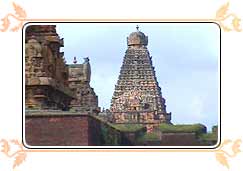
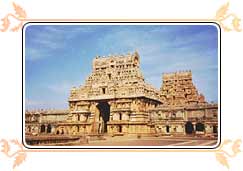 The Big Temple. Rajaraja Cholan, the Great Chola king built Bragatheeswarar Temple. Big Temple is an example for the Indian sculptural architecture greatness. Temple is surrounded by moat on two sides and Grand Anaicut river on the other side. This temple is unique to have the tallest tower over the sanctum sanctorum unlike the other temples. It is 216 feet tall. The stupa at the top is made of bronze.The walls of the sanctum are covered, with the wall paintings of Chola and Nayak periods, comparable to the famous Ajanta cave frescoes.
The Big Temple. Rajaraja Cholan, the Great Chola king built Bragatheeswarar Temple. Big Temple is an example for the Indian sculptural architecture greatness. Temple is surrounded by moat on two sides and Grand Anaicut river on the other side. This temple is unique to have the tallest tower over the sanctum sanctorum unlike the other temples. It is 216 feet tall. The stupa at the top is made of bronze.The walls of the sanctum are covered, with the wall paintings of Chola and Nayak periods, comparable to the famous Ajanta cave frescoes.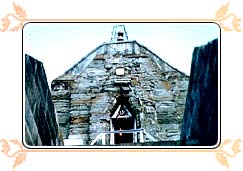
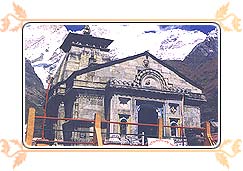 Kedarnath is a majestic sight, standing in the middle of a wide plateau surrounded by lofty snow covered peaks. The present temple, built in the 8th century by Adi Shankaracharya, stands adjacent to the site of an earlier temple built by the Pandavas. The inner walls of the assembly hall are decorated with figures of various deities and scenes from mythology. Outside the temple door a large statue of the Nandi Bull stands as guard.
Kedarnath is a majestic sight, standing in the middle of a wide plateau surrounded by lofty snow covered peaks. The present temple, built in the 8th century by Adi Shankaracharya, stands adjacent to the site of an earlier temple built by the Pandavas. The inner walls of the assembly hall are decorated with figures of various deities and scenes from mythology. Outside the temple door a large statue of the Nandi Bull stands as guard.